Development
The three “Tarantino class” submarines were called that way in the Argentine Navy because they were built in Taranto. They were of the “Cavallini” type, purchased after the approval of Law 11.378, “Renovación del Material Naval” issued on 29 September 1926, authorizing the purchase abroad of two groups of three submarines, to create the “Fuerza de Submarinos” at the naval base of Mar de la Plata. The first three units were ordered in Italy on 12 October 1927, as a variant of the Settembrini class, built at the Franco Tosi shipyard in Taranto. Construction contract was signed on October 15, 1927 at a unit cost of £208,000. They remained at the naval base of Mar del Plata until WW2. Albeit their career was mostly peaceful, albeit in 1955, Santiago del Estero, took part in the blockade of Rio de la Plata and had to face attacks from loyalist Gloster Meteor Mk F.4. They were decommissoned and sold for BU in 1958-1960, replaced by US GUPPY types.
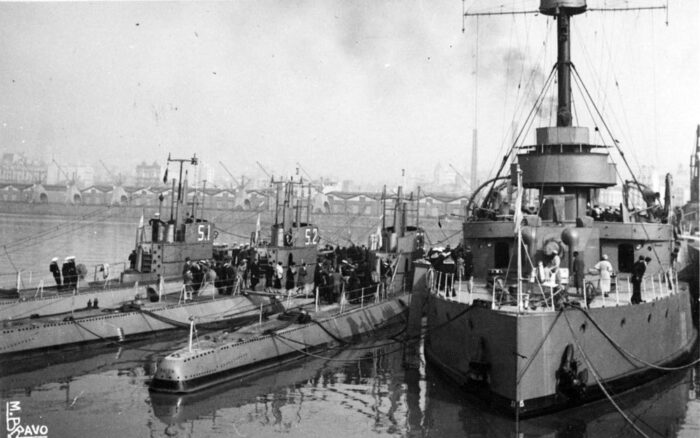
The “Tarantinos” close to their tender, ARA Independencia.
Design of the class
Origin
In 1926, neither of two great rivals of the South Americas, Argentina, Brazil had any recent submarines, which demonstrated their utility in WWI. They were seen as formidable deterrent assets. Yet, Brazil was the first to acquire some, the three F1 class (250/300t) in 1912, operational in WWI. Chile followed suite with a larger squadron of submarines, the Fresia class, six Holland types launched in 1915. In 1925 Peru ordered four submarines to the US (Holland type) as well, launched in 1926-28 as the R class. When Brazil ordered also in 1925 the large cruiser submarine Humaita in Italy (as a modified Balilla class), Argentina ordered its own three submarines in Italy as well. This became the Santa Fe class. They were rather smaller coastal types, better suited for the rio de la Plata defence. To gain time in design, a commission was sent in Taranto to acquire an existing Cavallini design with little modifications. Initially they were instead ordered to France, but the deal fell through. The Italian order was obtained notably thanks to financial incentives, they were paid much cheaper in exchange of a deal on agricultural products and notably meat to Italy. In exchange, France obtained as a compensation a purchase of Dewoitine fighters.
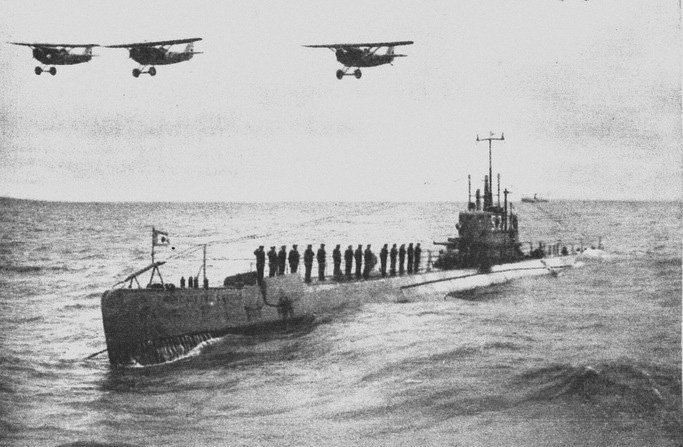
Argentinian Dewoitine fighters fly over Santiago del Estero. They were purchased at the same time as the santa Fe class
Hull and general design
These submarines were roughly similar to the Mameli class, also built at TOSI shipyards in Taranto. They measured 69.24 meters long (226 ft) for 8.68 meters wide (21 ft 8 in) and for a 5.05 m draught (16 ft 6 in). They displaced 935 Tonnes standard and 1,155 Tonnes Fully Loaded.
The general hull shape and ballasts, shape or the pressure hull and outer hull, assembly, and shape of the conning tower were all inspired by the Mameli class, with a 100 mm/47 OTO modello 1931 ans a Swedish Bofors 40/60 mm anti-aircraft gun aft, installed on the CT aftplatform. The Santa Fe class had eight 5330 mm torpedo tubes, prow and stern with 12 in store. The CT possessed the usual small helmsman post with windows, and a central fairing for two periscopes, one of attack and another for navigation. The crew was 40 men strong.
Powerplant
They came with two 1,500 hp Tosi diesel engines for surface running (3,000 hp), for a top speed when surfaced of 17.5 knots and one 1,400 hp Ansaldo electric motor for submerged running at 8.5 knots and two propellers. They carried 90 tons of diesel oil for a range of 7,100 miles surfaced, while submerged they could reach 80 nautical miles at 4 knots. Operational depth was 80 m.
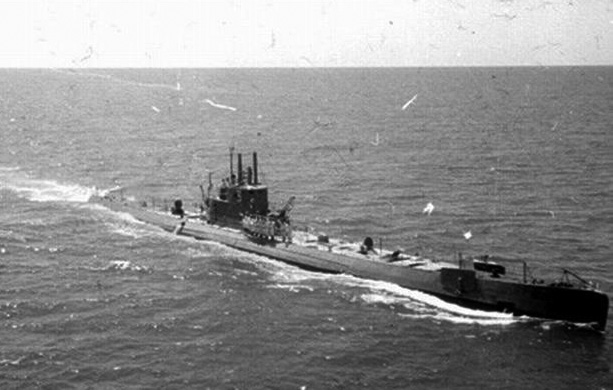
Armament
100mm/47 mm OTO Mod. 1931
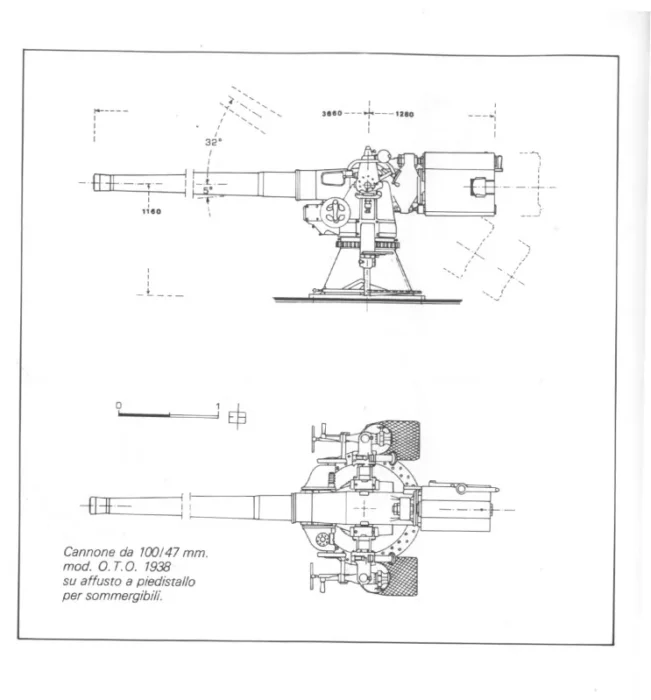
Manufactured in OTO (Odero Terni Orlando) this classic Cannone da 100/47 OTO Mod. 1931 (“OTO 100 mm/47 Naval Gun Model 1931″). Introduced in 1931, just in time as the boats were launched in 1931-32.
Placed on the forward deck, on a raised platform or bandstand well integrated into the hull, acting as wave breaker, to avoid sea spray. This 100 mm/47 (3.9”) Modello 1938 benefited from developments and improvements made on the earlier Modello 1928, specifically intended for submarines but also used on a few auxiliary vessels, all manufactured by OTO. The Modello 1931, 1935 and 1938 for Submarines were present on the the Glauco, Marcello, Cappellini, Liuzzi, Marconi, Cagni, Sirena, Perla, Adua, Argo, Acciaio and Flutto classes.
Specs
Gun Length oa: 194.5 in (4.94 m), 8-10 rpm.
Fixed Ammunition (HE) 30.4 lbs. (13.8 kg) 2,756 fps (840 mps)
Range: 35° 13,800 yards (12,600 m), OTO 1932
Weight 4.6 tons (4.7 mt) -5 /+32 or 35°.
To compare the previous Cannone da 100/43 modello 1927 had the following specs:
170 in (4.300 m) long, 8-10 rom. HE shells: 30.4 lbs. (13.8 kg), muzzle Velocity 2,625 fps (800 mps)
Elevation -5/+35°. Range: 30.4 lbs. (13.8 kg) HE Elevation/35° 12,000 yards (11,000 m).
40mm/40 Bofors
First version of the 1932 40 mm fältautomatkanon L/60. It could however be a 37 mm (Conways) or a pair of 8.80 mm Breda LMGs, which was more likely.
Torpedoes
12x 533 mm (21 inch) torpedoes
Models likely purchased:
-W 270/533.4 x 7.2 Veloce: 1,700 kg, 7.2 m WH 270 kg, 3,000-4,000 m/50 knots or 12,000 m/30 knots.
-W 270/533.4 x 7.2 “F”: 1,550 kg, 6.500 m, WH 250 kg, speed 3,000 m/43 knots or 10,000 m/28 knots
-W 250/533.4 x 6.5: 1,550 kg, 7.200 m, WH 270 kg, 4,000 m/48 knots or 12,000 m/30 knots.
-Si 270/533.4 x 7.2 “I”: 1,700 kg, 7.2 m, WH 270 kg, speed 3 km/42 kts or 7 km/32 kts, 9,2km/30 knots, 12km/26 kts
-W 250/533.4 x 6.72: 7.2m, WH 270 kg speed 4km/49 kts or 8km/38 kts.
-Si 270/533.4 x 7.2 “M”: 1,7 ton, 7.2 m, WH 270 kg speed 4km/46 kts, 8km/35 kts or 12km/29 kts.
They were also given also a pair of hydrophones.
A few years before being retired from service, the 100 mm cannons were replaced with a twin mount with AA Bofors mounting 40 mm/60.
⚙ specifications |
|
| Displacement | Displacement 935 t on the surface, 1,155 t submerged |
| Dimensions | Length 64.24 m Width 6.68 m Draught 5.05 m |
| Propulsion | Propulsion 2 Tosi diesel engines of 1,500 Hp |
| Speed | Submerged speed 8 knots Surfacing speed 17.5 knots |
| Range | 90t fuel oil, 7100nm at 8kts, 80nm at 4kts |
| Armament | 1 x 100mm/47 OTO m1931 1 x 40mm AA, 4 x 533mm (21 in) TTs (12) |
| Max depth | Operating depth 80 m |
| Crew | Crew 40 officers, non-commissioned officers and sailors |
General Evaluation
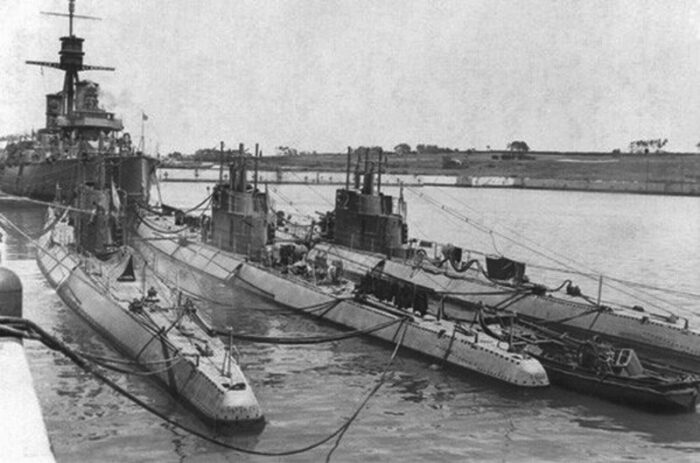
All three boats of the Santa Fe class were built by Franco Tosti Shipyard in Taranto. They were designated S-1 Santa Fe, S-2 Santiago del Estero, and S-3 Salta, and sailed from Taranto on 26 February 1933, and via Las Palmas-Canary Islands arrived in Buenos Aires, Argentina, on 7 April 1933, after a 7,000-nautical-mile trip. From 3 September, they constituted the “Grupo de Sumergibles”, joining the coast guard General Belgrano. For many years they served as support ship at the naval base of Mar del Plata. In 1938, the crew of the Santa Fe was decorated with a civilian honour for rescuing a local fishing boat in distress outside Cabo Corrientes.
Santiago del Estero set the record for depth for that class, diving into the South Atlantic down to 114 m. The three submarines had their original 40 mm AA gun removed after the end of World War II, for a twin system 40mm/60 mm Bofors guns. In 1955, Santiago del Estero under command of Lieutenant Commander Juan Bonomi took part in the blockade of Rio de la Plata (Revolución Libertadora). On 16 September she fought against a group of Gloster Meteor Mk F.4 fighter loyal to the deposed president Juan Domingo Perón.
They remained in service for many years. The last active was Salta, decommissioned with the arrival of the first two modified Balao class boats. Santa Fe was decommissioned on 14 September 1956, Santiago del Estero on 23 April 1959 and Salta on 3 August 1960. The hulls of Salta and Santiago del Estero were purchased by a private citizen which converted them into fuel tanks, using them in the Río Paraná for may more years. Fate unknown. Santa Fe was scrapped.
Career of Santa Fe class Submarine
 Santa Fe (1931)
Santa Fe (1931)
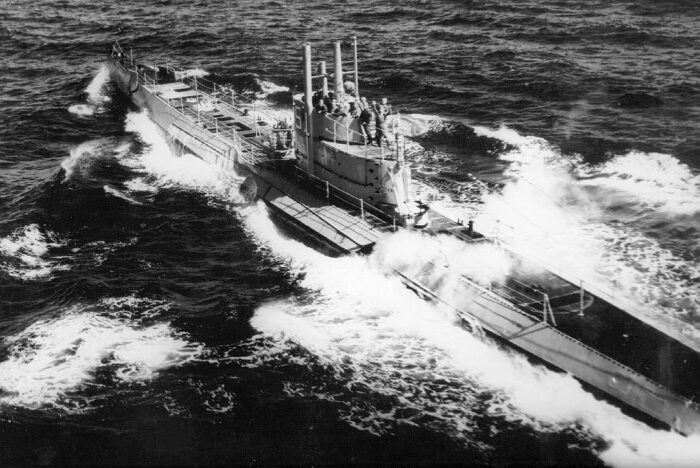
Santa fe was laid down on 28 may 1928 at Tosi shipyard, launched on 29 july 1931 and commissioned on 26 october 1932. Like her sisters Santiago del Estero and Salta she sailed to Buenos Aires, where they arrived April 7, 1933. Santa Fe received her combat flag in the namesake city Santa Fe on October 15, 1933 and arrived in Mar del Plata on September 1, 1933 until decommissioned in 1956 for starting training personnel. In a strong storm by July 1938, Santa Fe rescued a fishing boat in the waters of Cape Corrientes.
 Santiago Del Estero (1932)
Santiago Del Estero (1932)
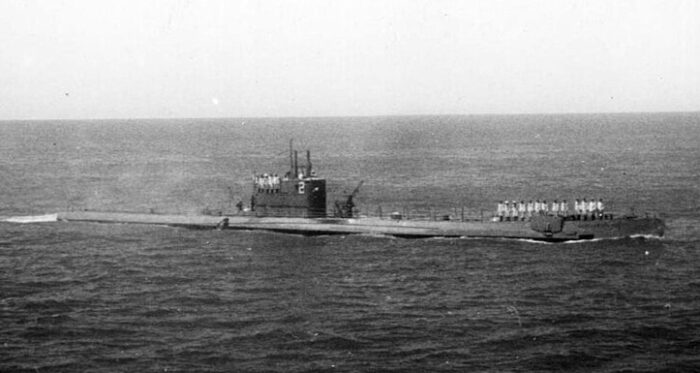
Santiago del Estero was laid down on 25 may 1928 at Tosi shipyard, launched on 28 march 1932 and christiened by Doña Irene Watson de Bianchi, and commissioned on 25 january 1933. Her pennant was “S-2” and later “S-3”. First commander was D. Ramón Poch, who in turn directed the member Squadron. On the long trip from Italy to Argentina, lasting 40 days they stopped at Las Palmas, and arrived in Buenos Aires on April 7, 1933 to receives their combat flag at the port of Santa Fe, on October 15 of 1933. Santiago del Estero had for godmother Mrs. Mercedes Cordero de Castro. On April 15 she was consecrated, by receiving the Virgin of Our Lady of the Consolación de Sumampa, gifted from Damas Santiagueñas.
She was commanded by Ramón A. Poch and XO Julio C. Mallea, then Lieutenant D. Fidel L. Anadón, Lieutenant Dellepiane from 1937 and in 1939 by Lieutenant D. Osear Rumbo, XO D. I. Chamorro.
In 1940-41 she was under command of Lieutenant D. Donato Saravia, then Lieutenant D. Patricio C. and in 1943-44 by Lt. Conway and Jose A., then D. Juan M. Bianehi and in 1945 by Lieutenant D, Eduardo Dunzelmann. Her last commander was in 1958, Lieutenant D. Mariano Torre.
On September 19, 1933, she entered the Mar del Plata, her Base for her whole career. She was assigned th old battleship Independencia as tender, like her sisters. Between 1933 and 1958, she remained in the Submarine Squadron. She trained personnel, making training sorties out of the Bay, Squadron manoeuvers, and carrying out patrols along the Argentinian coast.
On March 29, 1937, President General Agustín P. Justo, congratulated Santiago’s crew and the Division for her diving record, at 114 m. in South Atlantic waters.
With the revolution of 1955 in September she was under command of Lieutenant Commander D. Juan C. Bonomi. She took part, like the rest of the Navy, to revolutionary actions ended the 2nd government of Perón, after a determined blockade of the Río de la Plata, despite attacks by loyalist aicraft, repelled with Bofors 40 mm anti-aircraft fire. The effective action of this blockade was one of the decisive factors ending Perón’s rule and forced his escape. She entered Buenos Aires in July 1956.
By decree N9 4815 of April 23, 1959, she was declared obsolete, taken to the B.N.R.S. to be stripped, stricken and put on the disposal list sale. She was put in auction and purchased by Roberto Aguirre, transforming her into a pontoon fuel tank, to be used in the port of Buenos Aires.
She was the first Argentinian vessel of this name, paying homage to the Argentine province
 Salta (1932)
Salta (1932)
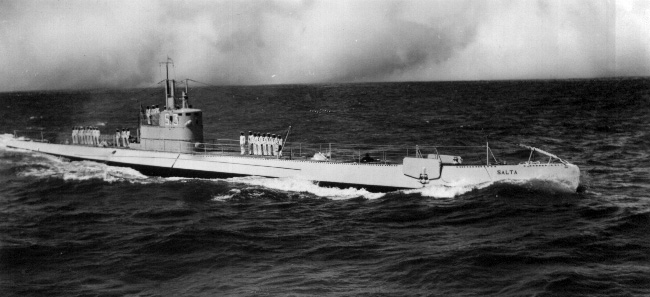
Salta was laid down on 28 may 1928 at Tosi shipyard, launched on 17 january 1932, and commissioned on 25 january 1933.
Her godmother was Mrs. Mrs. Angélica Torino de Corvalán, first commander Lieutenant Rodolfo A. González. She carried out her first sea trials in Taranto, and departed in convoy with her sisters, Santiago del Estero and Santa Fe, the day of her commissioning on February 25, 1933, under command of Commander Ramón A. Poch, flasghip Santiago del Estero.
She stopped like te others at Las Palmas (Canary Islands) to refuel and arrived to Buenos Aires on April 7, 1933. At 17km of the access channel to the Capital, she was greeted by President General Agustín P. Justo, Minister of Navy Admiral D. Manuel Domecq García, and high authorities as well as foreign observers on the “Jujuy”. On October 15, she received her combat flag in the port of Santa Fe. Next commanders were Lieutenant Rodolfo Calderón, Juan C. Mallea and during the war, Lieutenant D. Horacio Howard, D. Luis J. Prado, Carlos O. Ribero and D. Romas Savus.
Her last commander in 1959 was Luis Manrique.
As part of the Fleet, she was based at Mar del Plata, and until August 3, 1960, made more of 1,000 dives, the last in the waters of the Mar del Plata. They were kept budy with training of submarine personnel as well as anti-submarine warfare exercises, and Divisionial exercises and manoeuver. She also patrolled the coast.
By decree No. 8686/60 she was decommissioned and by decree No. 2607/61 put on the disposal list and sold at public auction, purchased by Aaron Gutman on April 5, 1961 and BU.
Read More/Src
Books
Revista del Mar. January 1968. ‘Our first submarines”, by Héctor Jorge Fernández. B. C. N.: Anonymous: “Our submarines”, Volume 45.
Gardiner, Robert (1996). Conway’s All the World’s Fighting Ships 1947-1995. Annapolis, Maryland, USA: Naval Institute Press.
Arguindeguy, Pablo (1972). Apuntes sobre los buques de la Armada Argentina (1810-1970) (in Spanish). Buenos Aires, Argentina: Comando en Jefe de la Armada.
Burzio, Humberto (1960). Armada Nacional (in Spanish). Secretaria de Estado de Marina.
Burzaco, Ricardo (1999). SUBMARINOS DE LA ARMADA ARGENTINA 1933 – 2000 (in Spanish). Buenos Aires, Argentina: Eugenio B.
Links
histarmar.com.ar/ Tarantinos.htm
histarmar.com.ar/ Santa Fe 1933
histarmar.com.ar/ Santiago del Estero 1933
histarmar.com.ar Salta 1933
ara.mil.ar/
navypedia.org/ santa_fe.htm
Model Kits
None found, want one ? Contact us

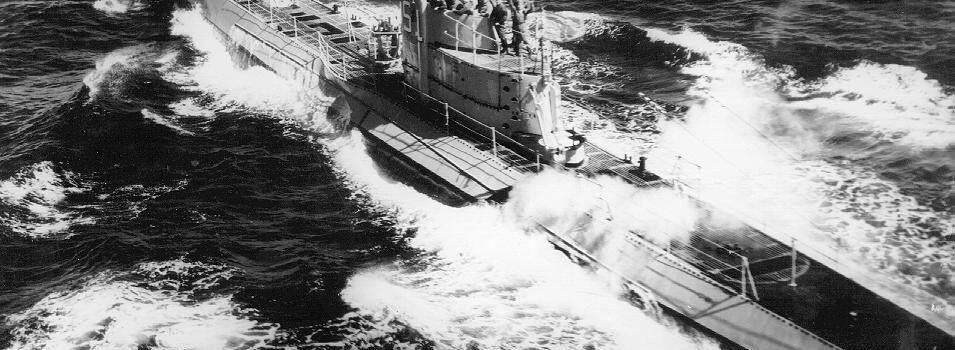
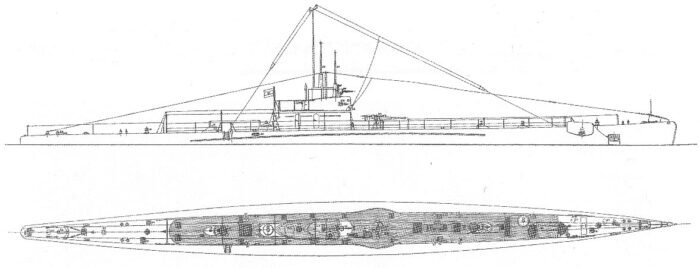
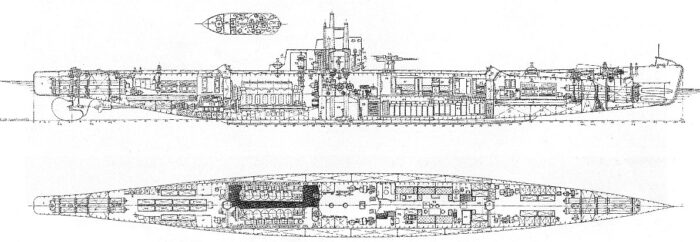
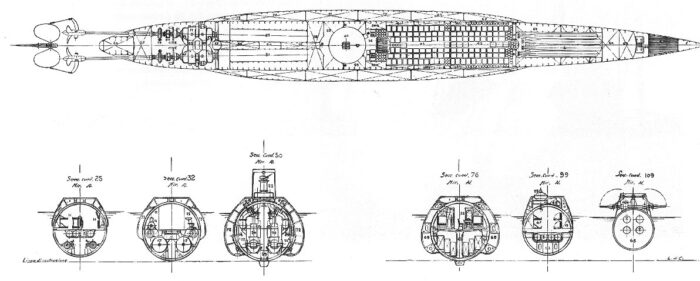

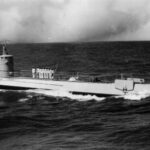
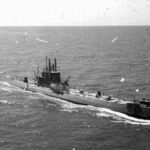
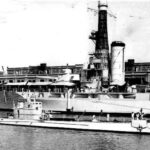
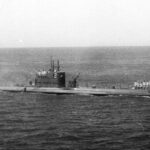
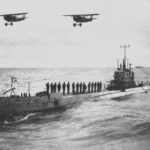
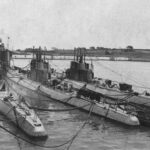
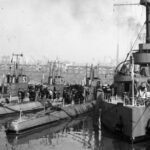
 Latest Facebook Entry -
Latest Facebook Entry -  X(Tweeter) Naval Encyclopedia's deck archive
X(Tweeter) Naval Encyclopedia's deck archive Instagram (@navalencyc)
Instagram (@navalencyc)





 French Navy
French Navy Royal Navy
Royal Navy Russian Navy
Russian Navy Armada Espanola
Armada Espanola Austrian Navy
Austrian Navy K.u.K. Kriegsmarine
K.u.K. Kriegsmarine Dansk Marine
Dansk Marine Nautiko Hellenon
Nautiko Hellenon Koninklije Marine 1870
Koninklije Marine 1870 Marinha do Brasil
Marinha do Brasil Osmanlı Donanması
Osmanlı Donanması Marina Do Peru
Marina Do Peru Marinha do Portugal
Marinha do Portugal Regia Marina 1870
Regia Marina 1870 Nihhon Kaigun 1870
Nihhon Kaigun 1870 Preußische Marine 1870
Preußische Marine 1870 Russkiy Flot 1870
Russkiy Flot 1870 Svenska marinen
Svenska marinen Søværnet
Søværnet Union Navy
Union Navy Confederate Navy
Confederate Navy Armada de Argentina
Armada de Argentina Imperial Chinese Navy
Imperial Chinese Navy Marinha do Portugal
Marinha do Portugal Mexico
Mexico Kaiserliche Marine
Kaiserliche Marine 1898 US Navy
1898 US Navy Sovietskiy Flot
Sovietskiy Flot Royal Canadian Navy
Royal Canadian Navy Royal Australian Navy
Royal Australian Navy RNZN Fleet
RNZN Fleet Chinese Navy 1937
Chinese Navy 1937 Kriegsmarine
Kriegsmarine Chilean Navy
Chilean Navy Danish Navy
Danish Navy Finnish Navy
Finnish Navy Hellenic Navy
Hellenic Navy Polish Navy
Polish Navy Romanian Navy
Romanian Navy Turkish Navy
Turkish Navy Royal Yugoslav Navy
Royal Yugoslav Navy Royal Thai Navy
Royal Thai Navy Minor Navies
Minor Navies Albania
Albania Austria
Austria Belgium
Belgium Columbia
Columbia Costa Rica
Costa Rica Cuba
Cuba Czechoslovakia
Czechoslovakia Dominican Republic
Dominican Republic Haiti
Haiti Hungary
Hungary Honduras
Honduras Estonia
Estonia Iceland
Iceland Eire
Eire Equador
Equador Iran
Iran Iraq
Iraq Latvia
Latvia Liberia
Liberia Lithuania
Lithuania Mandchukuo
Mandchukuo Morocco
Morocco Nicaragua
Nicaragua Persia
Persia San Salvador
San Salvador Sarawak
Sarawak Uruguay
Uruguay Venezuela
Venezuela Zanzibar
Zanzibar Warsaw Pact Navies
Warsaw Pact Navies Bulgaria
Bulgaria Hungary
Hungary

 Bundesmarine
Bundesmarine Dutch Navy
Dutch Navy Hellenic Navy
Hellenic Navy Marina Militare
Marina Militare Yugoslav Navy
Yugoslav Navy Chinese Navy
Chinese Navy Indian Navy
Indian Navy Indonesian Navy
Indonesian Navy JMSDF
JMSDF North Korean Navy
North Korean Navy Pakistani Navy
Pakistani Navy Philippines Navy
Philippines Navy ROKN
ROKN Rep. of Singapore Navy
Rep. of Singapore Navy Taiwanese Navy
Taiwanese Navy IDF Navy
IDF Navy Saudi Navy
Saudi Navy Royal New Zealand Navy
Royal New Zealand Navy Egyptian Navy
Egyptian Navy South African Navy
South African Navy






























 Ukrainian Navy
Ukrainian Navy dbodesign
dbodesign